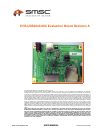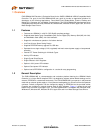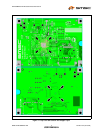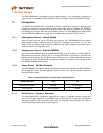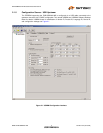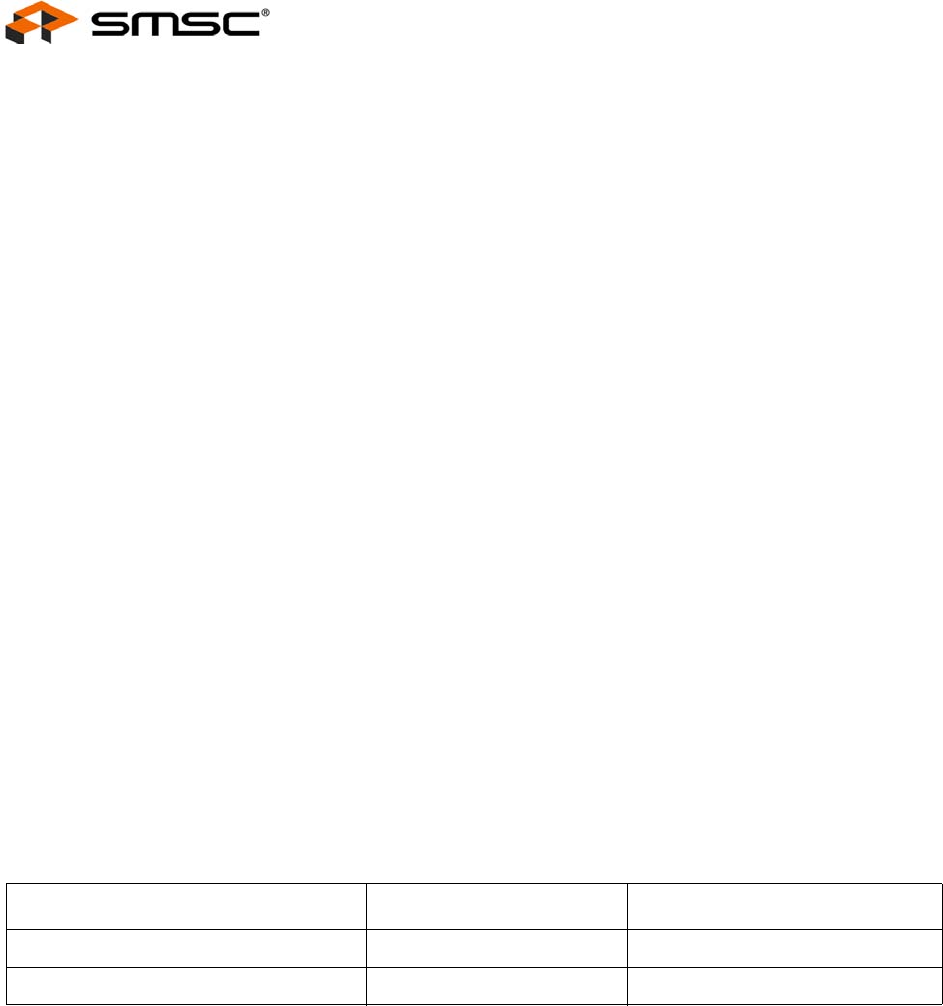
EVB-USB2240-IND Evaluation Board Revision A
Revision 0.2 (06-03-08) 4 SMSC EVB-USB2240-IND
USER MANUAL
2 Getting Started
The EVB-USB2240-IND is configured by internal default registers. In this configuration it operates as
a generic self or bus-powered USB 2.0 Media Controller with SMSC standard VID/PID/DID settings.
2.1 Configuration
The SMSC EVB-USB2240-IND is designed for flexible configuration solutions. It demonstrates
functionality with default internal register settings, configurable external EEPROM, and EEPROM
configuration update via the USB host. When an EEPROM is attached, the USB2240 will auto detect
the interface and configure itself with the EEPROM contents. The EVB-USB2240-IND demonstrates
how the EEPROM configuration settings can be changed without physical EEPROM removal.
2.1.1 Configuration Source - Internal Default
When the device does not see an EEPROM upon power-up, the EVB-USB2240-IND uses internal
default register settings; it sets the Vendor ID, Product ID, Language ID, and Device ID, and a few
other choices. An improved feature with the USB2240 is that external passive components are not
needed to set the IC configuration mode.
2.1.2 Configuration Source - External EEPROM
Upon power-up the USB2240 looks for an attached EEPROM on its I2C interface. The EVB-USB2240-
IND provides an 8-pin DIP socket IC U2 for an external EEPROM of type 24C02 to customize the
Media Controller’s settings. The EEPROM contains 256 bytes of user customizable settings. Among
the settings are Vendor ID, Product ID, and Device ID numbers. For details on the fields please see
the USB2240 Software Release notes.
2.1.3 Power Source - Self/Bus Powered
The EVB-USB2240-IND supports both self and bus powered operation. By default the EVB-USB2240-
IND is populated for bus powered operation. Refer to Table 2.1 for resistor population options to
change the power source.
2.1.4 Clock Source - Crystal or Resonator
The EVB-USB2240-IND is designed to support either a crystal or a resonator. Because crystals offer
more accurate center frequency, the evaluation board is populated with a crystal and its supporting
decoupling capacitors. Some customers prefer lower cost resonators, which eliminates the need for
external decoupling, lowering bill of material expense.
Table 2.1 Population Options for Self or Bus Powered Operation
POWER SOURCE R14 R16
Bus Powered (Default) Populate Do not Populate
Self Powered Do not Populate Populate



